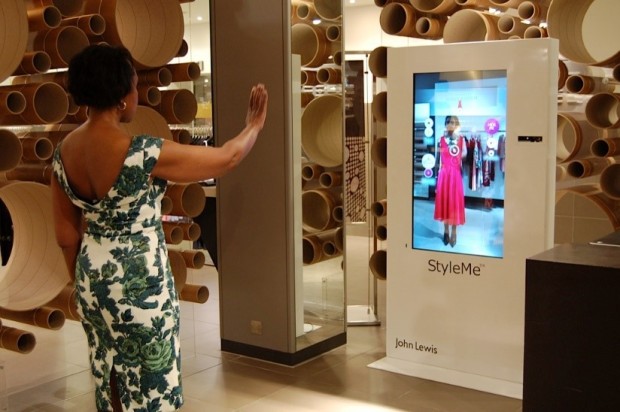Five ways you can make your classic brand more successful in the digital era
In many companies, each channel was originally managed in isolation with dedicated teams, budgets, processes, tools, reporting structures and revenue goals. However, with most customers now navigating between an array of digital touchpoints for a single purchase, this has to change. Today, consumers are dictating how and where they want to be engaged and serviced.
From the customer’s perspective, a typical journey might be:
A search of the Web on one’s smartphone while commuting, adding items to one’s basket, investigating findings on one’s laptop while at home in the evening, visiting stores to review items, searching for coupons and comparing prices on the mobile phone while one is in the store.

Credits: Globalekonomi
They are increasingly dictating how and where they want to be engaged and serviced.
No more can brands dictate how they want to push their customers. Regardless of industries, as long as we are dealing with consumers, we have to realise their journeys are fluid. Currently, many companies are advancing their Omni-Channel systems which have risen from digital transformation projects (a gradual approach building from existing systems and interconnecting their digital platforms).
Over the 2 decades, regardless of the categories, we have experienced the evolution of brands from single channel to multichannel to cross-channel and now to Omni-channel. Also, technological advances have moved very quickly and now many people are already embracing Artificial Intelligence. What took 1 year to advance, now changes in less than a few weeks with increasing research and development funds invested by companies. There is an increasing focus on building the digital world and ecosystem to capture the mobility and dynamism of consumers.
For a classic brand, The Digital Experience needs to deliver an educated, convenient purchase route that can drive special services or purchases. Over the years, I have seen marketers being forced to move beyond building views, engagements and developing award-winning beautiful imagery campaigns to delivering commercial results without the traditional Brick & Mortar.
Concurrently, physical stores are significantly improving their customer’s experiences. In my opinion, Sephora and Burberry are clear examples of winners in this front. The traditional retail teams allow the store environment to transform into education, make-up platforms or streaming of the season’s cutting-edge fashion on the catwalk.

Credits: Pinterest
This may determine the survival of brick & mortar. It is almost a reverse situation that is taking place now and we need to bring our beautiful digital imagery experiences into the stores.
Based on my experience of working in global, regional and local organisations and brands, here are five ways you can make your Classic Brand more successful in the digital era:
1. INTEGRATING ANALYTICS ACROSS YOUR ORGANISATION
One should put a huge emphasis on the importance of linking the Chief Marketing Officer / Chief Digital Officer with the Chief IT Officer and the Chief Financial Officer to define analytics for the business. This becomes increasingly more important to grasp the analytics across these functions and not just in specific functions to be able to speedily extract learnings to address new areas.
The lack of integration of this to organise data and analytics or competencies to manage this can determine its success or failure of a classic brand in the digital era. My advice would be to take it on upon your teams to ensure that they can review these as a very minimal requirement:
- Can we capture and stitch together all the user actions as they navigate multiple channels?
- Have you simplified your dashboard to look deeper into this area and assigned responsibilities?
- Do you capture the delivered experiences to help discover customer struggles and explain low engagement and order size, abandonments or bad app reviews?
- Can you get a real-time view of your business, including revenues, transaction, and engagement level as your customer interacts?
- Can you deliver a quantified view by the incident as the number of impacted customers and revenues to help prioritize efforts? Can your analytics tell me what went wrong and why? Which team needs to be engaged?
If your organization or brand cannot answer half of those then it is time to re-organize internally and with external support help how you are able to track these on a daily basis. The discussion also goes on with regards to the evolving role of Chief Marketing Officers where Analytics and Digital will be a driving force.
The organization where this has worked well have been mindful and continually support the cross conversation.
2. ADOPTING THE DIGITAL CULTURE AT WORK
From a cultural workplace standpoint, those who successfully manage to drive through the entire change of the culture from office workplace. Bearing in mind most organisations often start with building and wanting to keep or rotate human resources to be able to accommodate to this change. However, the change of culture stems right to the core if the digital transformation of the classic brand is not superficial.
Omnichannel strategies are different from multichannel. And, supported by an effective digital performance platform, can answer all of these questions in the affirmative. Yet, beyond deploying technical solutions, the biggest challenge is often implementing the organizational and cultural changes necessary. Teams should no longer operate in silos; they need to collaborate and communicate to act not as a multi-faced business, but as a unified organization where all (Omni) work together to give customers whatever they are looking for at any point along their digital shopping journeys.
If you don’t address the culture upfront at each stage of transformation, the internal barriers will take up the time of the digital leadership team and can hinder the successes of the organization. This has separated the ones who are much faster in making the change.
3. LEADING & HIRING THE RIGHT PEOPLE IN STRATEGIC POSITIONS
We still see organisations expecting you to go out there and “hire “ the digital team, “ work and train your traditional marketers” overnight or rely on agencies without strong central people driving this. This won’t work if the leader of the team does not drive this through daily and is not living and breathing the digitalization. Hence, companies that succeeded in the transformation made key hires, for instance, Burberry CEO Angelo Ahrendts to head Apple’s Retail and online stores or the hiring of Karen Dracou, ex- Omni channel Director of John Lewis to head Tesco’s multi-channel team.
What the organization might get if they have multiple marketers looking into this is a wastage of trial and error resources on developing digital top spins that drives engagement on what they believe are engagement value, without bringing in true commercial value and sales.
4. HOLISTIC PROCESS REDESIGN
Many companies try to adapt their current processes and string the platforms together with concurrent upgrades of various functions. They often just fix and latch on developments when they are making changes to business models. This also often occurs when a company moves from a single channel model to an Omnichannel model and when undertaking digital transformation projects. They take a gradual approach building from existing systems and interconnecting them as they test and learn.
This may not be an ideal way. Some companies and brands are better off not having their baggage and redrawing their future with bold changes to the business models. If the core DNA of the brand is not strong and cannot house the digital add-ons, it is a better decision to do a complete removal and start afresh to build this portion.
This doesn’t work if their transformation plan is not part of a strategic business roadmap and how digitalization is going to drive the value-add and impact the shift of resourcing and people.
5. WILLINGNESS TO INVEST IN THE DIGITAL FUTURE
In all the successful cases you will see the increase in Investment in the following areas are common are a must:
– Increase percentage of ratio of digital to overall marketing, visual
Merchandising and merchandising
– Training
– Merchandising
– Inventory Management
– Mobile Technology
– A portion of the budget put to test and learn
Having gone through numerous changeover and transitions of Classic Brands and made them adaptable in the digital world, the more successful companies I have come across have and accept bold leadership that overinvest disproportionately in resource and set-up in the initial phase but have considerations of sustainability.
BRINGING IT ALL TOGETHER
These are five areas that make some organisations more successful than the rest based on my first-hand experience. These involve both the hard areas (data & technology) but also the softer areas (people & resourcing). Aside from these five areas, I also shared on the growing importance of customer experience as part of the core theme in the Customer Experience event organized by the Marketing Magazine bringing thoughts from 2 decades of my experience having led global, regional and local brands and businesses in FMCG, Services and Retail.
Wong Mei Wai has taken many brands through transformations across industries across Asia on digital and placement of teams including classic brands like Lipton, Tiger Beer, Heineken, Citibank, taking APBS and Vietnam Breweries to become the top alcoholic digital brands in the markets. Her perspectives are from her experience and the current challenging brand and business transformation which involve both hard and software transformation to build Omni channel brand experiences.

